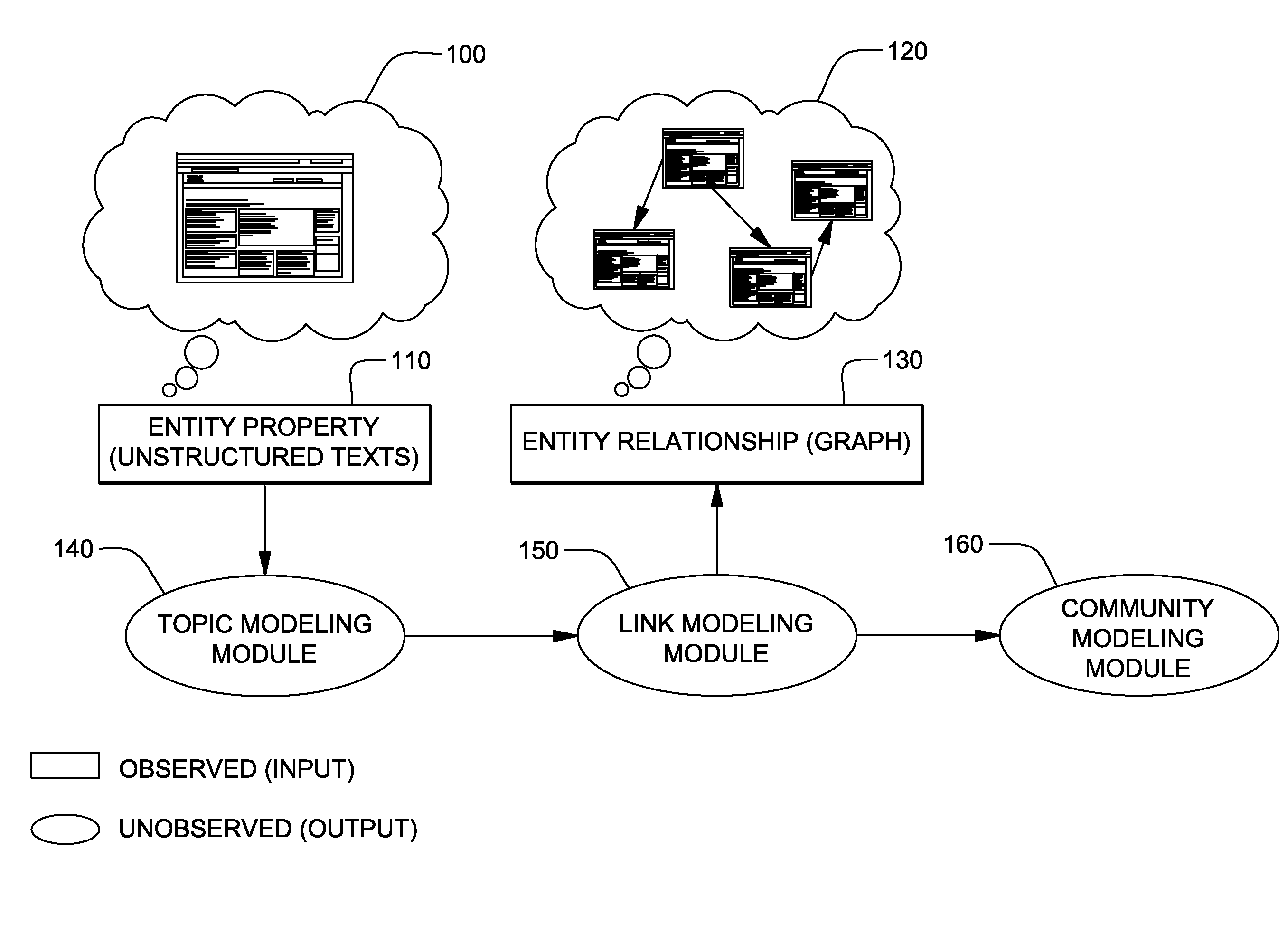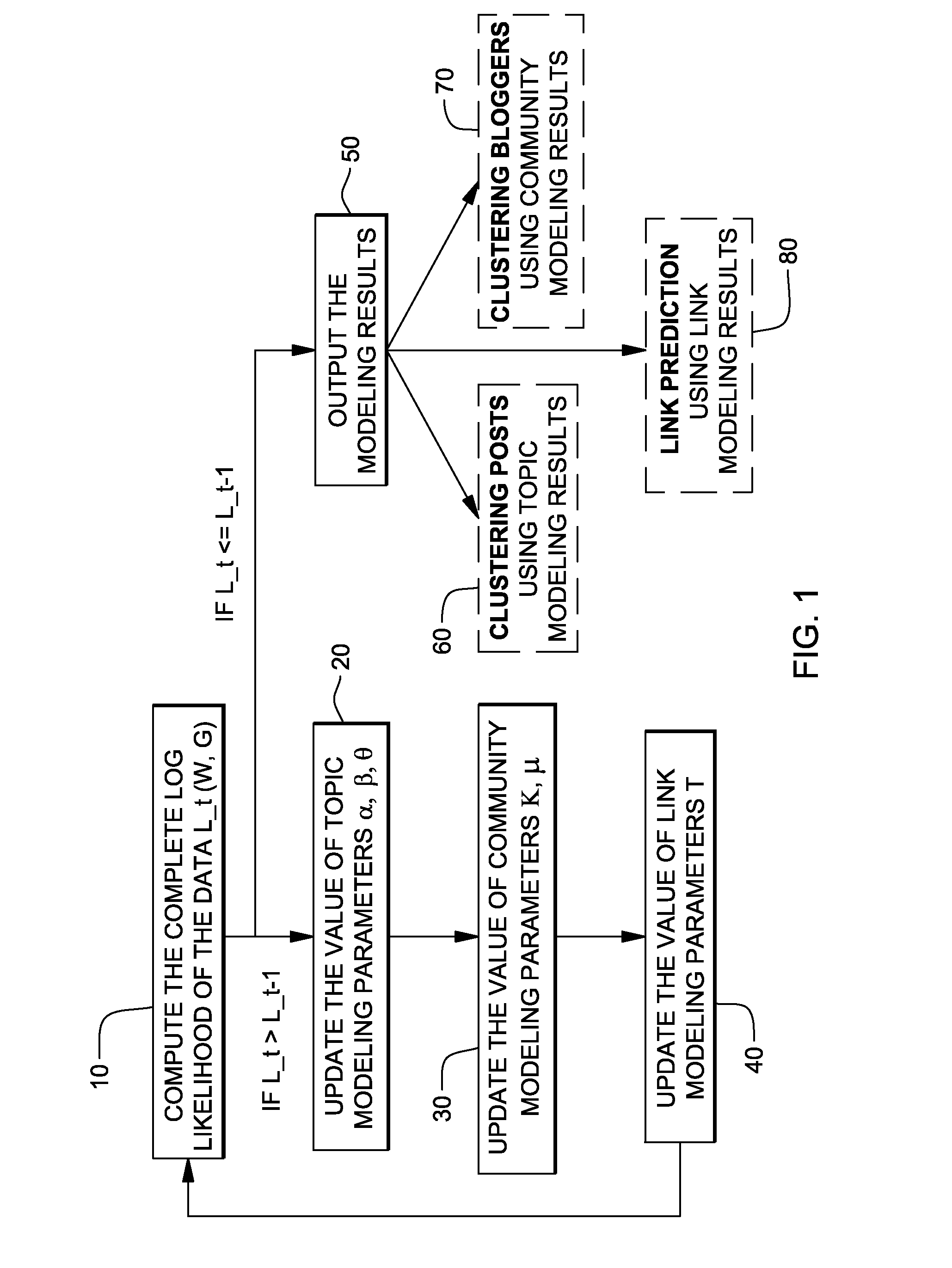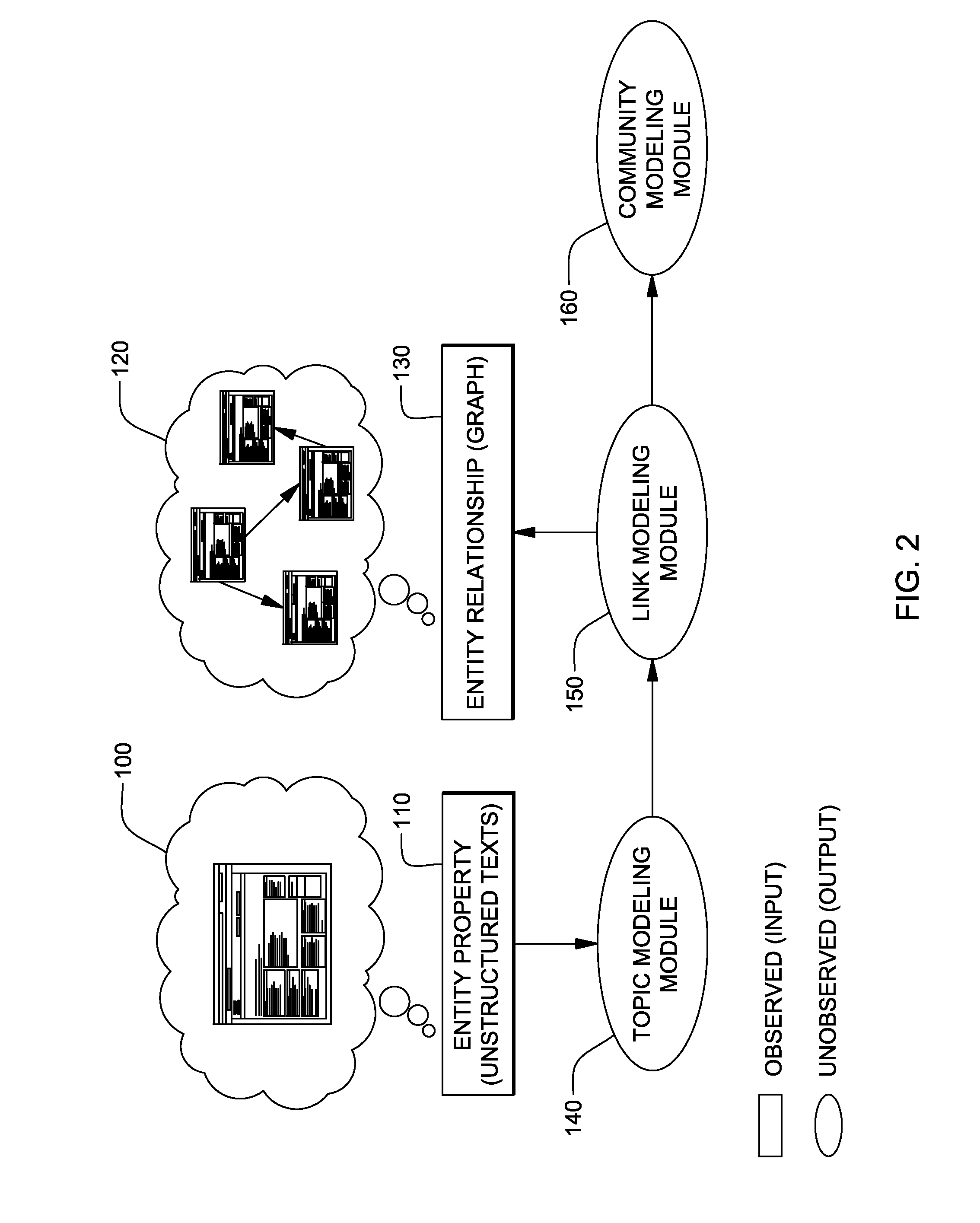Systems and methods for extracting patterns from graph and unstructured data
a graph and unstructured data technology, applied in the field of systems and methods for extracting patterns from graphs and unstructured data, can solve the problem that the pattern is usually not applicable in real applications
- Summary
- Abstract
- Description
- Claims
- Application Information
AI Technical Summary
Benefits of technology
Problems solved by technology
Method used
Image
Examples
Embodiment Construction
[0019]One embodiment of the present invention treats community or grouping information of an entity as a hidden variable, whose value and similarity measure between entities are extracted from unstructured texts (i.e., text description of an entity; e.g., posts, comments, etc.). The community or grouping information may determine whether there is an edge between two entities. The hidden variable refers to variables that are not directly observed in data collecting process, but conceptually exist. For example, users may know that there should be friendship information (e.g., a link indicating friendship) between Facebook® page owners or bloggers. However, the friendship information may not be shown or illustrated due to privacy or other issue(s).
[0020]According to this embodiment, values of hidden variables can be learned using following method:[0021]1. Initialize values of parameters for topic modeling of the unstructured texts and the values of parameters for an edge generation: to...
PUM
 Login to View More
Login to View More Abstract
Description
Claims
Application Information
 Login to View More
Login to View More - R&D
- Intellectual Property
- Life Sciences
- Materials
- Tech Scout
- Unparalleled Data Quality
- Higher Quality Content
- 60% Fewer Hallucinations
Browse by: Latest US Patents, China's latest patents, Technical Efficacy Thesaurus, Application Domain, Technology Topic, Popular Technical Reports.
© 2025 PatSnap. All rights reserved.Legal|Privacy policy|Modern Slavery Act Transparency Statement|Sitemap|About US| Contact US: help@patsnap.com



